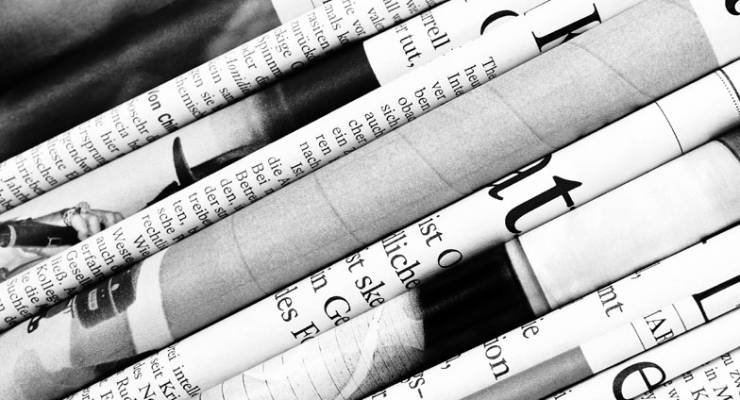
There are enough data points in now for us to call it: the era of advertising supporting mass news media is all but over.
Advertising built the mass media of the 20th century. It funded it. It shaped it.
Say you wanted to reach AB incomes in a given city? The upmarket broadsheet was a near perfect vehicle. Now? Facebook. Or say you wanted that one buyer like a needle in a haystack, then classified advertising distributed in newspapers was the ideal tool; put all the needles into one haystack and give it to the reader to sort through. Now? The net pre-sorts both buyers and sellers.
To build a church-state divide between the newsroom and advertising floor in this context needed strong ethical resistance by journalists. Now that resistance is turned on clickbait — the chase for raw numbers of clicks to satisfy advertisers regardless of news quality.
The digital challenge for mass news media has never been about finding readers. The Neilsen rankings of digital news sites is still dominated by the traditional media players. How often have we heard media owners boast that more people read their news than ever before?
It’s always been about advertising. Advertising spend is not infinite and when new advertising opportunities (“Hello, Google!”) emerge, the dollars gush out of old mediums — particularly newspapers.
Do an empirical test. Pull out today’s newspaper — any newspaper. Count the ads. Go on. I’ll wait.
Back already?
That experience matches the data. In the past 12 months, the newspaper advertising dollar curve has accelerated its downward trend. From about 2008, revenues of newspapers were experiencing year-on-year declines of between 5% and 10%. In the past 12 months, those declines have jumped to 10% to 15%.
In fact, in their report on the half year to December 31, 2016, Fairfax Media said metro publishing advertising revenues were down 16%.
[How to make money in online media: turn it all into ads]
News Corp reported that for the quarter ending at the same time, advertising revenues were down 9% year on year, following a 12% decline at the end of 2015.
Two caveats on these figures — both of them bad for Australian newspapers:
- These revenues include both print and digital advertising; and
- In the case of News, these are global figures, incorporating the US (mainly The Wall Street Journal) and the British papers.
The publishers like to talk in percentages, particularly when they are talking about increases in digital advertising. But most revenues still come from print, so a decline in print revenues from a higher base is nowhere near offset by any increase in digital advertising.
Digital advertising has its own challenges. Because there is no natural correlation with news, most of it goes to Google, Facebook or other social media. Maybe a third of digital advertising revenues is left for all content creators, which doesn’t leave much for mass media companies.
There’s another data point that matters. Somewhere between 25% and 30% of users have installed ad-blockers. Video streaming and time-shifting are removing advertising from the television experience. These actions skew young, so we can expect these figures to increase over time.
Are all these figures random deviations from the mean? Or a deadly acceleration?
To answer that, we should look at what the publishers are doing, not what they are saying. That tells us they expect this slide to continue as they hack at costs to ensure the expenditure line continues to trend as much as possible under the revenues curve. That’s why Fairfax Media is cutting $30 million and News Corp is aiming at $40 million in savings from its Australian operations.
Of course, there remains potential for advertising — or advertising-like practices — to sustain journalism.
[Gambling is the only growth area in advertising. No wonder media companies are hooked.]
Some advertising — brands, tourism — seems to endure, even in print. Real estate remains a heavily contested space. Native advertising, sponsorship, ad sharing with platforms — these are all emerging income sources. Some low-cost news start-ups (including some start-up-like units within the traditional organisations) are building small-scale advertising models relying on audience targeting.
None of these are going to replace the rivers of gold that made media so wealthy in the 20th century. Each of them brings their own ethical challenges for journalists. Clickbait is the last desperate attempt to hang onto a handful of those dollars. But rather than scrabbling for crumbs, the end of the relationship should really free us to ask: how do we re-shape journalism for our 21st century communities?







When ‘hacking at costs’ means shedding journos, surely the most irreducible element in a newspaper, then what I can’t understand is why anyone buys them at all, apart from xwords & cat boxes.